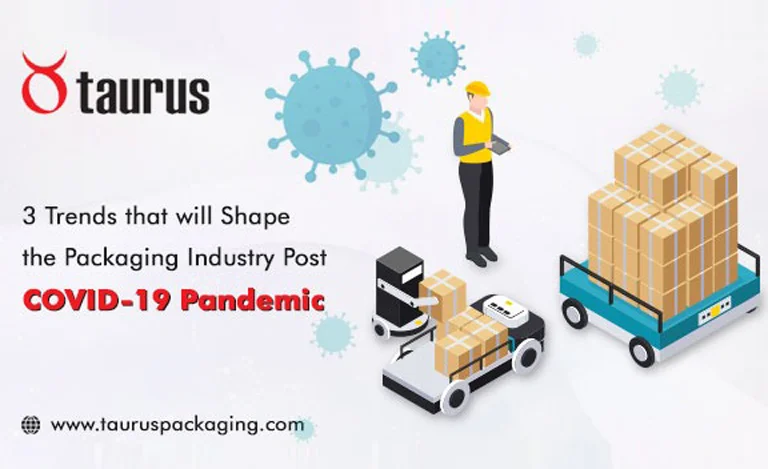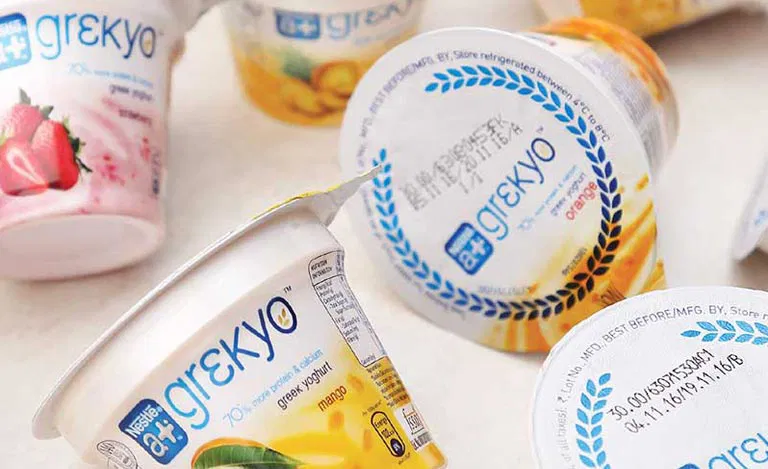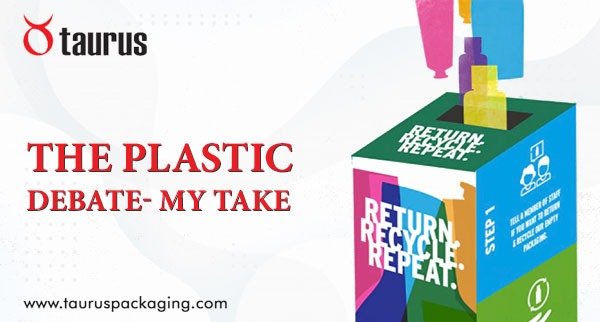PVC or PETG: Breaking the Myths
PVC Shrink Films have ruled the Indian packaging industry for the longest time. However, due to many issues associated with PVC, a need was felt to find an alternative material that could potentially replace PVC and become the superior choice.
Several different polymers were introduced and tested in the market but saw little success. Finally, PET-G was born, with the hope that the packaging industry had found the best shrink sleeve, till date.
However, some questions remain unanswered:
Is it practical and even possible to replace PVC altogether?
Is PVC truly all bad and PET-G all good?
Can PETG Shrink Films offer the same quality and finish as PVC Shrink Films?
Do companies have the resources, know-how and infrastructure to use PET-G packaging
material for all types, shapes and sizes of containers?
Through this article, I aim to break through some common myths about PVC and PET-G and provide an objective and practical understanding of both materials; their uses, benefits and pitfalls so you can make the correct choice for your business. Let’s get started!
WHAT IS PVC?
Polyvinyl Chloride or PVC is one of the most adaptable and extensively used synthetic plastic polymers or shrink film that contains 57% chlorine and 43% carbon. PVC is made in bulk domestically, which is why it is readily accessible. PVC Shrink films are known as RIGID PVC films. They are free from plasticizers (phthalates) and eliminate the issues of chemical leaching.
PVC SHRINK FILM USES
Shrink films made of PVC are most commonly used in all kinds of shrink tunnels and container materials, especially HDPE containers for cosmetics and food products. Being a full-bodied shrink sleeve, PVC offers additional space as well as several practical benefits when it comes to designing the best packaging for your products.
BENEFITS OF PVC SHRINK FILMS
PVC shrink films aid in communicating crucial product-specific details to the end-user as specified by the regulatory bodies.
When attached to container caps, PVC shrink films provide a tamper-proof seal that protects the contents from adulteration and reduces chances of malpractice.
These films make life easier by providing a holistic design view of pre-formed film bands, specially manufactured to fit specific shapes of containers. With a 360° view easily available, there is no requirement for a custom-made design.
WHAT IS PETG?
Popularly referred to as PETG or PET-G, Polyethylene Terephthalate Glycol is a kind of thermoplastic polyester celebrated for its superb pliability. PET-G is exceptionally long-lasting and resistant to chemicals, making it a great choice for various production processes.
PETG SHRINK FILMS & THE DEBATE AGAINST PVC
As mentioned earlier, Shrink PETG was created as an alternative to PVC due to two main problems –
LOW SHRINKAGE: PVC has only up to 50-60% TD shrinkage which can cause a flowering effect when packaging certain shapes of bottles. PETG offers a much higher shrinkage percentage, between 70-80%, making it a smarter choice.
THREATS TO THE ENVIRONMENT: When PVC is not disposed off correctly and dumped into garbage landfills or burnt, it releases dangerous carcinogenic gases and dioxin due to its chlorine content. These pose serious environmental and health concerns for years to come.
Hence, PVC is considered the most ‘TROUBLED’ plastic material in use today.
IS PETG THE BETTER ALTERNATIVE TO PVC? BREAKING THE MYTHS
1. Printed PVC waste is easily recyclable with multiple applications such as pipes, window frames, cable insulation, floors coverings, roofing sheets etc. Printed PET-G waste is difficult to recycle and does not have many applications. Most of it has to be incinerated completely.
TAKEAWAY: If PVC is collected and disposed of properly, it can return high value to companies that recycle PVC scrap.
2. PETG is Non-Chlorinated but doesn’t work well as a shrink film with few container materials.
TAKEAWAY: All types of PVC sleeves cannot be easily replaced by PETG. Hence, PETG is not the perfect solution or replacement for PVC as it is usually considered to be.
3. Shrinking PETG is a complicated process, especially if you have access to non-sophisticated shrink tunnel infrastructure.
TAKEAWAY: Shifting to PETG Shrink Sleeves is not easy and may require you to make heavy additional investments.
4. There is widespread production of Shrink PVC in India. Whereas PET-G is either imported or made only by few bigger film makers.
TAKEAWAY: Shifting from PVC to PETG can negatively impact the local and domestic economy.
5. The need for specialized steam tunnels and in some cases, multi-stage hot air tunnels to correctly sleeve PET-G shrink films makes it an expensive and some what unpopular choice. Even with the most advanced infrastructure, there may be limitations in performance of PET-G, as compared to PVC.
Often, when using PETG in hot air tunnels, the HDPE or PP container expands before the time the sleeve is shrunk onto the container. After the container returns to normal temperature and its normal size, air pockets get formed between the sleeve and the container wall.
In sharp contrast, PVC is flexible and adapts to the container’s shape even with a basic hot air tunnel. It delivers great results and reduces reprocessing or rejection.
TAKEAWAY: PVC shrink films are painless to shrink on most containers compared to a
PET-G shrink film. They are also energy-efficient and cost-effective choices that get the job done quickly.
6. Most Indian small-medium enterprises have access to basic shrink tunnels for application of PVC shrink sleeves. Moving to other materials means these companies must invest heavily in more sophisticated technology and infrastructure, not easily available.
TAKEAWAY: PVC shrink films are obvious and sometimes the only possible choice.
7. When using PETG for labelling containers with thin walls or pre-labelling containers that is empty, it is crucial to maintain just the right shrink conditions. Otherwise, there may be major distortions in the label and the container.
TAKEAWAY: PETG’s shrink force is on the higher side that can lead to contortions.
CAN PET-G REPLACE PVC?
PET-G has various benefits including a higher shrinkage, durability and resistance to chemicals. Undoubtedly, it is one of the best contenders as a shrink sleeve choice for packaging needs. However, now that there is a major shift towards PETG, another problem has raised its head, one that we cannot ignore.
RECYCLING MIXED WASTE
The waste reaching our landfills is a mixture of PVC and PETG. Even though PVC can be easily recycled, PETG waste cannot be, and this reduces its usefulness to companies who deal with recycling. Segregating the PVC and PETG waste is even more difficult. Burning PVC is harmful but burning PETG isn’t good or useful either.
So does PETG have the capability to completely replace the demand for PVC in India – considering that it does not work well in all situations, can lead to distortions and may require a higher level of investment on technology and infrastructure? Only time will tell.
OTHER ALTERNATIVES TO PVC AND PETG
OPS (Oriented Polystyrene): Created in Japan, OPS offers the same flexibility as PVC but costs much more since it is an imported product and requires constant refrigeration. It is a preferred choice for companies who don’t want to use PVC or looking for more superior performance than that offered by PETG films.
LD-PET (Low-Density Polyethylene Terephthalate): LD-PET costs less than OPS
while offering the same level of versatility. The yield is higher than PETG and PVC and
has a density of 1.1 with lower utilization of plastic. LD-PET performance has been
observed to be at par with PVC.
NEXT PETG: This is an advanced PETG created to function well on HDPE/PP containers in hot air tunnels without creating undesirable air pockets. It has got better performace than regular PETG. To ensure perfect performance, NEXT PETG should undergo trials in varying weather conditions.
ROSO (Roll on Sleeve): ROSO is a PP-based shrink film that is roll-fed. Its shrinkage ratio is limited and can only be used in certain conditions.
PLA (Polylactic Acid): This shrink film is completely free from plastic but not widely used since it is costly. It is made from sugarcane or corn starch and is 100% biodegradable.
COC (Cyclic Olefin Copolymer): This is a Polyolefin-based shrink sleeve. The differentiating factor is its lower than density of 1 and is usually ideal for shrink sleeves with a density of 1+ for easy segregation during recycling by floatation method.
However, it is not easily available and the cost is higher too.
CONCLUSION:
Clearly, it is too soon to conclude which shrink sleeve option is the best or which one ranks higher over the other. However, the need of the hour is to understand the problems that exist.
I am hopeful that sooner or later, our Government, as well as our packaging scientists, will find the most workable solutions that protect our environment and support the ever-changing and evolving needs of the packaging industry.
But till then, it is crucial for all of us to SEGREGATE, DISPOSE OF, COLLECT AND RECYCLE WELL. Remember, plastic is not the Problem, its disposal is.
What are your thoughts on the PVC and PET-G debate? Tell me about it in the comment section below.
For more information on shrink sleeves, feel free to reach out to me, and I will be happy to answer your questions or gather the right information you require.




 COVID-19 pandemic will affect every human and each country directly or indirectly.
COVID-19 pandemic will affect every human and each country directly or indirectly.


